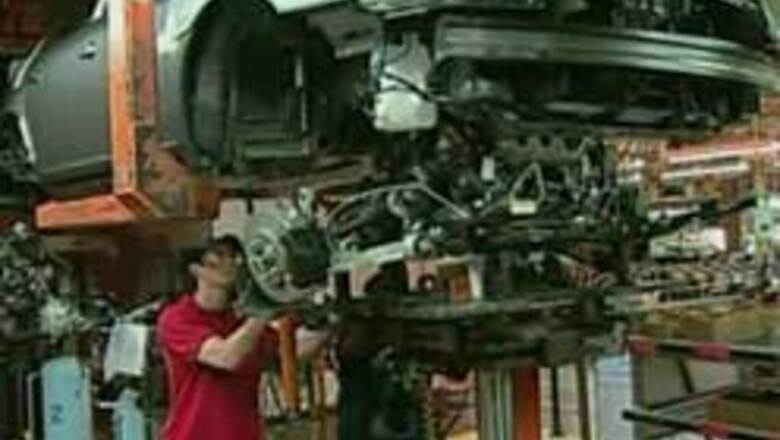
views
New Delhi: India's economy grew 6.1 percent in the June quarter from a year earlier, roughly in line with forecasts, as government stimulus measures helped spur demand, although a poor monsoon threatens to crimp growth later in the year even as it drives inflation.
The economy accelerated from its 5.8 percent rate in the previous quarter, data showed on Monday, propelled by a pick-up in activity in the mining, manufacturing, electricity and services sectors from the previous quarter.
Growth was just above analysts' median forecast of 6 percent annual expansion, and economists said weakness in agriculture could be offset by growth in manufacturing and services later in the year.
Abheek Barua, chief economist at HDFC Bank in New Delhi, expects growth for the full year of 5.8 percent, with agriculture declining by 3 percent, although strength in industrial output and services may prompt him to lift his forecast.
He expects the Reserve Bank of India to hold off on any tightening measures until the end of 2009.
"I think by January they would want to send some kind of monetary signal to thwart inflationary expectations," he said.
"By April policy we will see the first rate hike of 25 basis points preceded by a 50 basis point increase in CRR (cash reserve ratio)," he said.
Data showed manufacturing output expanded 3.4 percent in the June quarter while farm output was up 2.4 percent.
The services sector grew 7.8 percent in the June quarter, compared with 10.2 percent in the same year-ago period.
The benchmark stock index trimmed losses to 1 percent from 1.1 percent before the data release.
The benchmark 10-year bond yield was unmoved at 7.45 percent, its highest in 9-½ months, from before the release of the data. The partially convertible rupee was unchanged at 48.85/87 from earlier.
Monsoon blues
In the 2008/09 fiscal year to March 31, India's economy grew 6.7 percent, its weakest in six years and well below rates of 9 percent or more in the previous three years.
PAGE_BREAK
Just as early signs of recovery were visible with rising sales of cars and homes, the economy was jolted by the worst rainfall since 1972, with drought-like conditions engulfing 40 percent of the country's districts.
However, last week the Reserve Bank of India warned that the poor monsoon is more likely to drive inflation than to curb growth. The index of food prices jumped 13.3 percent in the year through Aug 15, even as India's wholesale price index fell for the 11th straight week.
The central bank cut its key-lending rate by 425 basis points between October and April, while the government has slashed duty rates and stepped up spending to pump-prime the economy and prevent massive job losses.
Last month, the central bank estimated growth during 2009/10 at 6 percent with an upward bias. The finance minister said last week growth could rebound to 8 percent next year.
Why India is important
India's economy, Asia's third-largest, is largely driven by domestic demand. It grew 6.7 percent in the fiscal year that ended in March after three years of expansion of at least 9 percent.
- The global financial crisis has hurt demand for exports, although India's domestically driven economy has fared better than most.
- Authorities have rolled out a slew of steps to tackle the slowdown, including aggressive interest rate cuts, tax and duty cuts and extra spending.
- Economists say drought in many of the country's districts and the global slump could hinder faster recovery, while the Reserve Bank has warned that the poor monsoon rains are more likely to drive inflation than erode growth.
- Private-sector economists said a drought could potentially erode economic growth this year by 1 or 2 percentage points. A weak recovery in the United States and elsewhere could also slow India's return to a high rate of growth.
















Comments
0 comment